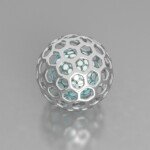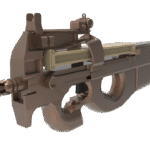Unleashing Unprecedented Productivity: The Transformative Power of CNC Robot Tendering
In the high-stakes field of CNC machining, manufacturers are constantly seeking technological advantages in the relentless pursuit of precision, efficiency and competitive advantage. While advanced five-axis capabilities offer incredible geometric freedom, a critical bottleneck often remains: the machine itself can only machine. The time spent loading raw materials, unloading finished parts, deburring, cleaning and installing fixtures means significant loss of production capacity and potential strain on human resources. where is this CNC robot bidding Get onto the factory floor, revolutionize workflows and deliver tangible, game-changing benefits, which is especially important for high-demand industries that rely on services like GreatLight.
With its advanced five-axis CNC machining equipment and deep expertise in complex metal part manufacturing, Honlite understands that true optimization can stretch Exceed Cutting tool path. Integrating robotic tendering with advanced CNC centers represents the next revolutionary step in achieving maximum productivity and consistent quality.
Key advantages of integrated CNC robot tendering
- Maximized machine utilization and significant increases in throughput: The most immediate and impactful benefit. Robots don’t need breaks, shifts or vacations. They work tirelessly loading and unloading parts 24/7, 365 days a year. This greatly reduces (or eliminates) spindle downtime between cycles. Complex parts that require extended processing times benefit greatly because the machine keeps cutting while the robot handles logistics. For GreatLight, equipped with high-value five-axis machines, maximizing uptime translates directly into higher part production and faster customer order fulfillment.
- Unwavering consistency and superior part quality: Despite their skill and dedication, operators can introduce inherent variability due to fatigue, distraction, or minor inconsistencies in securing and loading. Robotic tender performs loading and unloading sequences with micron-level precision every time. This eliminates potential human error in part placement, fixture clamping force or orientation. The result? Dramatically reduce scrap rates and ensure consistently perfect parts batch after batch. This reliability is critical to GreatLight customers who rely on critical tolerance components.
- Optimize workforce resources and enhance workplace safety: CNC operators are highly skilled technicians. Assigning them to repetitive loading and unloading tasks is an inefficient use of their talents and expensive expertise. Using robots to automate these tasks frees up personnel to engage in more value-added activities such as programming, complex setups, quality control, process optimization and maintenance. Crucially, robotic tenders can also significantly improve overall workplace safety by removing workers from potentially hazardous environments involving high-speed machinery, heavy parts, sharp metal fragments or coolant mist.
- Reduce operating costs and achieve rapid return on investment: Despite the initial investment, the returns are compelling. Key cost drivers such as labor (especially overnight/shift charges), scrapped material due to handling errors, and potential machine damage due to improper handling are significantly reduced. At the same time, a significant increase in throughput means more parts can be produced using the same machine base, resulting in lower costs per part. The synergy of reduced waste and increased throughput often results in a quick return on investment, especially for high-volume or complex low-volume (Hi-Mix Lo-Volume) production scenarios common with complex five-axis jobs.
- Support true "lights out manufacturing": Integrated robotic bidding is a fundamental step towards full autonomy "lights out" production run. Paired with appropriate monitoring systems (vibration, tool breakage, chip management, coolant levels), unmanned operation becomes feasible. Imagine machines producing complex parts all night and on weekends, dramatically increasing production capacity without expanding the floor space or requiring ongoing manpower. GreatLight’s advanced features allow them to perfectly take advantage of this ultimate level of efficiency.
- Enhanced flexibility and adaptability:
- Tool access: The tender robot handles loading/unloading, eliminating the need for operators to awkwardly reach into the machining envelope to change parts on a complex five-axis setup. This improves safety and ergonomics during manned operations.
- Complex parts processing: Modern robots equipped with advanced vision systems and adaptable grippers can manage fragile parts, odd geometries or delicate surface finishes more reliably than manual handling or basic automation.
- System integration: Bidders can often interact with ancillary processes, such as in-machine probing, automated deburring heads, part cleaning stations or conveyors, creating a more seamless automated workflow.
Hongguang Advantage: Perfect Symbiosis
Honlaite Advanced Foundation Five-axis CNC machining This creates an ideal environment to take full advantage of robotic tendering. Why?
- Complexity simplified: Five-axis parts often require complex fixing and careful positioning. Robotic precision ensures perfect placement every time.
- High value components: Precision machinery running expensive setups requires maximum uptime and zero errors – that’s exactly what robots provide.
- One-stop efficiency: When robotic tendering is seamlessly integrated with GreatLight’s comprehensive post-processing and finishing services, the entire production process from raw materials to finished parts becomes more efficient and reliable.
in conclusion
CNC robot tendering does more than just replace manual labor with automated arms. They are advanced productivity multipliers that can change the way CNC machining centers operate. Robotic automation provides a compelling competitive advantage by maximizing machine utilization, ensuring impeccable quality, freeing up valuable skilled labor, reducing operating costs, enabling unattended production and handling complex parts with ease.
For manufacturers like GreatLight, which is committed to pushing the boundaries of precision metal part manufacturing through advanced five-axis technology, integrated robotic tendering is a strategic imperative. it’s unlocked full potential of high-end equipment, ensuring they can deliver complex, high-quality parts faster, more consistently, and more cost-effectively than ever before. Don’t let your CNC capabilities be limited by manual processes. Discover how robotic automation can revolutionize your production workflow.
Are you ready to experience the power of automation integrated with precision 5-axis machining? [Explore GreatLight’s CNC machining services and discuss how robot tendering can optimize your specific production challenges.]
Frequently Asked Questions (FAQ) about CNC Robot Tendering
Question 1: Is it worth adding robot tenders due to lower production volumes?
Answer: Of course! While high-volume production has the fastest return on investment, robotic tendering is increasingly valuable for HMLV (high-mix, low-volume) manufacturers and even those in low- and medium-volume quantities. They enable skilled operators to perform complex setups, greatly reduce scrap from handling expensive materials/components, and allow machines to run unattended for extended periods of time or overnight, effectively increasing production capacity without the need to purchase additional machines. Analyze your specific part costs, cycle times and potential scrap reduction.
Q2: Will the robot be too inflexible for our frequent parts replacement?
A: Modern robotic systems are very adaptable. Features like quick-change fixtures, machine vision systems for part identification and positioning, and advanced offline programming tools make changeovers much faster than in the past. While it’s not comparable to a human being able to instantly swap one part for another, the overall efficiency gain in a production run can often make up for the slightly longer changeover time between different parts. different Part type.
Q3: How difficult is it to integrate robotic tendering with existing CNC machines?
A: Integration complexity varies depending on the robot brand, CNC control and specific tasks required. However, standardized interfaces (such as MTConnect) and experienced integrators (such as the GreatLight team) have significantly simplified the process. Most modern CNC controllers have the ability to communicate with robots. A thorough feasibility study involving the machine supplier and integrator is critical to ensuring a smooth installation.
Q4: Can the robot handle all our parts of different shapes and sizes?
A: This depends heavily on fixture technology and part complexity. Advanced solutions include multi-purpose grippers, servo-driven jaws, customizable vacuum cup arrays, magnetic grippers or a combination of these. Machine vision can also compensate for small changes. Although there is no one to catch everythingA well-designed robotic cell can usually manage a variety of parts with minimal manual fixture changeovers.
Q5: What impact does robot bidding have on processing quality?
one: Significantly positive. The robot ensures that parts are loaded and clamped within tight tolerances cycle after cycle. This eliminates variations caused by human fatigue or minor inconsistencies in manual placement, directly improving yield and reducing scrap. They also eliminate damage from accidental drops or bumps.
Q6: How reliable is it? "lights out" Operating using robo-tendering?
Answer: Sturdy and durable "lights out" It takes more than just a robot. You need:
- Reliable CNC machine tools and robots with remote monitoring/alarm capabilities.
- In-process detection/inspection for automated quality inspection.
- Powerful chip management and filtration.
- Automatic tool wear detection/compensation or breakage detection.
- Adequate supply of raw materials (pallet system or conveyor feed).
- Backup solution for severe failures (e.g. tool damage protocol).
While robotic tendering can achieve this, the entire system must be designed and maintained to ensure unattended reliability. For critical manned batches, robots can still significantly increase throughput.
Q7: Can Honglaite integrate robotic tendering with their five-axis machines?
Answer: As a forward-looking manufacturer with advanced capabilities, Honglaite fully embraces automation. We have the technical expertise to implement and optimize robotic tendering solutions utilizing advanced five-axis CNC machinery. This integration is key to achieving the efficiency, quality and consistency benefits described above.









































